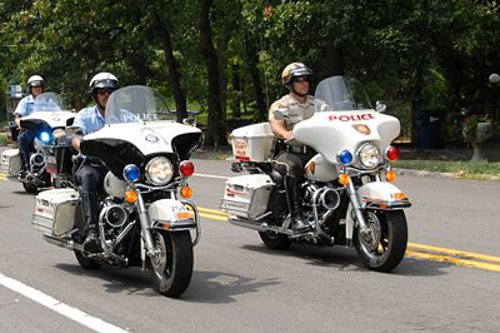“Sir, do you know why I stopped you today?” is probably the last thing you want to hear on your commute home. However, if you violate window tint laws, it’s likely to happen.

Considering that it doesn’t take long to become familiar with the tint laws in your state, and considering that doing so will spare you a headache (traffic stops, citations and fines are all possible outcomes for disregarding tint laws), why not bone up a bit on window tinting laws in the USA?
Why Are Tinted Windows Regulated?
There are two main reasons that states have chosen to enact tint laws:
- Visibility while driving at night. Heavily tinted windows are difficult to see through in low-light conditions.
- To promote safety of law enforcement officers. States want to protect police offers (and other enforcement agents) during a traffic stop or any other time they approach a vehicle. If an officer can’t see inside a car s/he stopped, it makes for a potentially dangerous situation.
However, despite the universal nature of window tint laws, the specific rules and regulations can vary widely from one state to the next. Whatever the specific laws are in your state or community, they generally address three key issues:
1. Darkness Restrictions & VLT (Visible Light Transmittance)
Each state requires a certain amount of light to pass through your car windows. The actual darkness is measured in units of VLT (visible light transmittance). For example, a film with a VLT of 40%, would allow someone outside the vehicle to see 40% of the light passing through the windows. These restrictions are likely to be strictest on the front end of your vehicle (all glass the driver looks through), and typically most lax on the left and right rear windows. This is so an officer can see a driver clearly in the event of a traffic stop.
It’s best to check where your state stands on darkness regulations. This is the most prominent rule, and with reason: It’s the one drivers are most likely to break. When it comes to car window tinting, understanding VLT restrictions can save quite the hassle.
2. Can I Tint My Windshield?
Since a lot of sun will enter your vehicle at a forward angle, it’s a completely valid question. However, if you want to tint an entire windshield, most states will require you to obtain a medical exemption.
However, if you wish to tint only the top portion of your windshield, you’re likely in luck. Many states allow vehicle owners to tint the top 4-7 inches of their windshield, and on many cars this can make a world of difference. Other states allow tinting all the way to the windshield manufacturer’s AS1 line (assuming your windshield has this line, as not all of them do).
Next to darkness restrictions, this is the next most likely tinting law to be broken, so pay attention.
3. Do I need to Have a Certified Tint Sticker on My Car?
The answer depends upon your state. Some states require all film sold to be certified. Others don’t regulate this aspect. Many states requiring certified film also require a sticker to be placed in a specified location on your vehicle to designate that the tint is legal.
For instance, if you live in Connecticut, you’ll be required to have a sticker on your window tinting to prove the film is legally certified. But if you call Nevada home, no such restriction would apply. Understanding this small part of the law is easy, and in turn, can save a lot of hassle.
In all, window tint, when installed within the law, can provide solid benefits to drivers. Aside from heat protection and glare reduction, many motorists fancy car tint for it’s privacy and aesthetic features. Yet it’s crucial to understand the laws where you live before installing any tint. It’s safe to say that nobody wants fines and citations. Follow the rules, and you’ll have nothing to worry about.
Guest Author Jared Diamond is a window tinting expert who writes for DetailWiz.com




